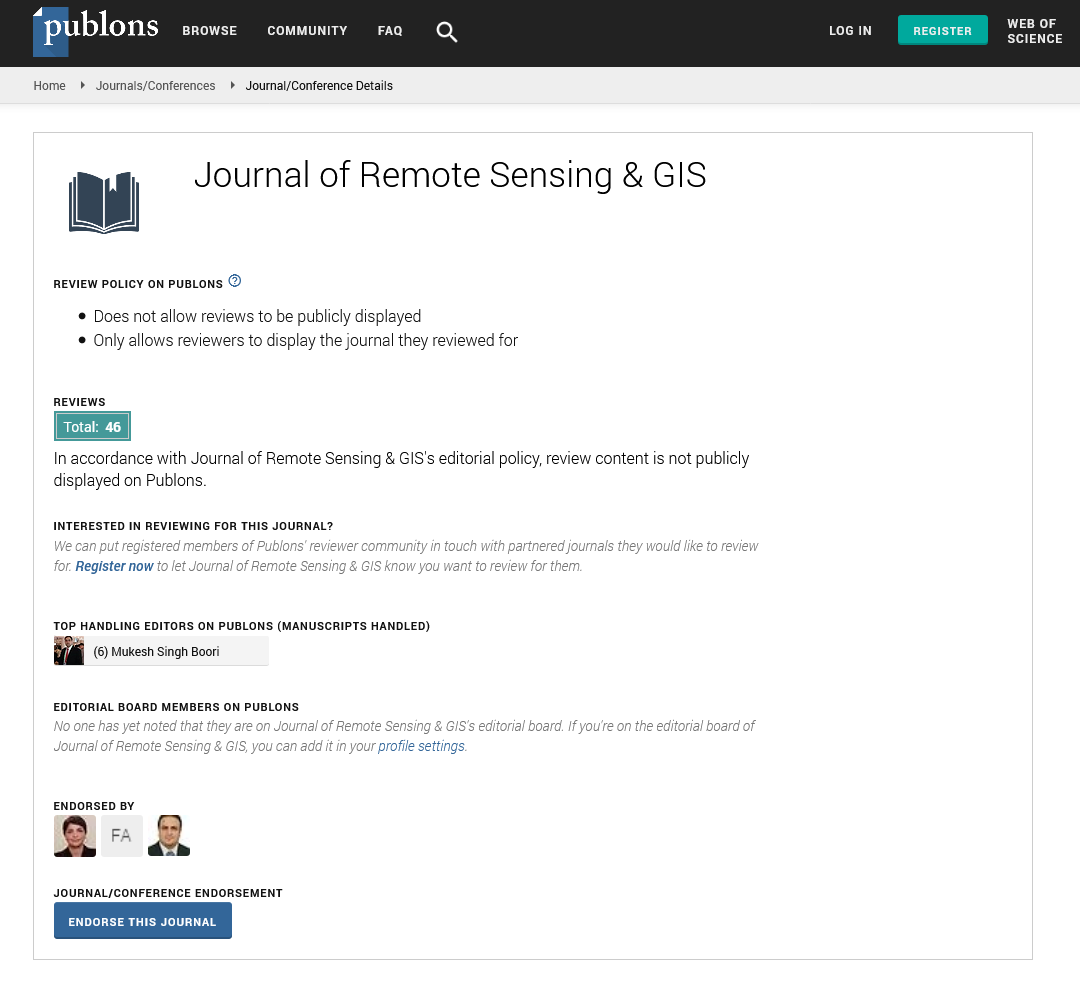Indexed In
- Open J Gate
- RefSeek
- Hamdard University
- EBSCO A-Z
- OCLC- WorldCat
- Publons
- International Scientific Indexing
- Euro Pub
- Google Scholar
Useful Links
Share This Page
Journal Flyer

Open Access Journals
- Agri and Aquaculture
- Biochemistry
- Bioinformatics & Systems Biology
- Business & Management
- Chemistry
- Clinical Sciences
- Engineering
- Food & Nutrition
- General Science
- Genetics & Molecular Biology
- Immunology & Microbiology
- Medical Sciences
- Neuroscience & Psychology
- Nursing & Health Care
- Pharmaceutical Sciences
Public space as a key component in the geography of post-disaster recovery in Mexico city
5th International Conference on GIS and Remote Sensing
September 16-17, 2019 | Rome, Italy
Milton Montejano-Castillo, Mildred Moreno-Villanueva and Erick Espinosa Jimenez
Escuela Superior de Ingenieriay Arquitectura Unidad Tecamachalco del Instituto Politecnico Nacional, Mexico
Posters & Accepted Abstracts: J Remote Sens GIS
Abstract:
At an international level, it has been increasingly recognized that public spaces are an invaluable resource in a post-disaster recovery phase. Among the most developed research topics are the role that public space plays after a disaster, the evaluation of spaces before disasters, accessibility aspects for emergency shelters and design guidelines to make spaces useful in crisis. Nevertheless, any intervention to prepare such spaces before disasters strike requires not only an urban analysis on the aforementioned issues, but also a political-administrative geographical perspective as a starting point for the management of an adaptation process. This is where this work is inserted as one more step of a long term project of the authors in Mexico City, a territory at seismic risk with more than twenty million inhabitants. Therefore, a Geographical Information System is used to visualize in the first place, new categories of public space and their potential use in case of disasters; secondly, an understanding of these public spaces according to the ages of the city; and in third place the visualization of such spaces and their overlap with jurisdictions and official polygons like those of heritage conservation, boundaries between municipalities and designated areas for vertical urban growth. Based on these layers, an analysis of strengths, weaknesses, opportunities and threats (SWOT) is carried out, which allows an approach to the possibilities of intervention based on the priorities, missions and objectives of each program and jurisdiction. The analysis is complemented by a geographical proposal for an articulation of key public spaces.

